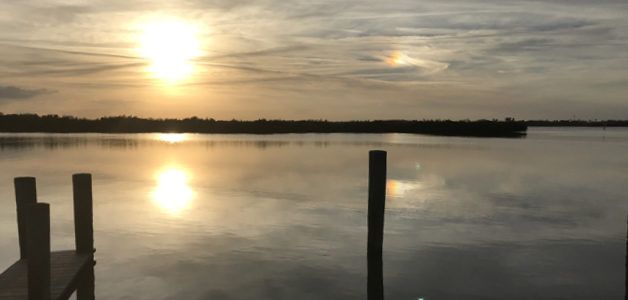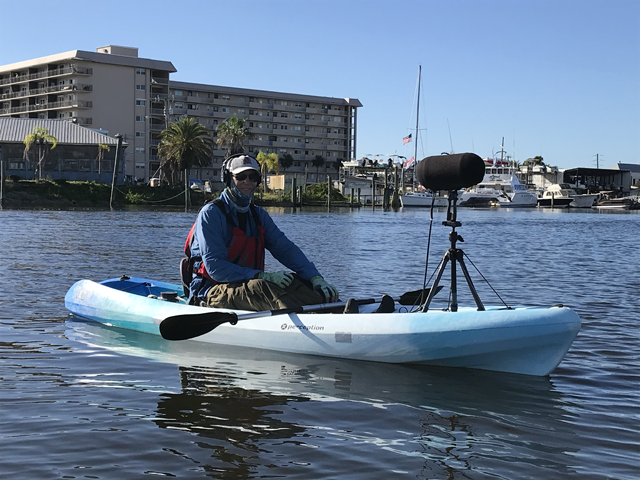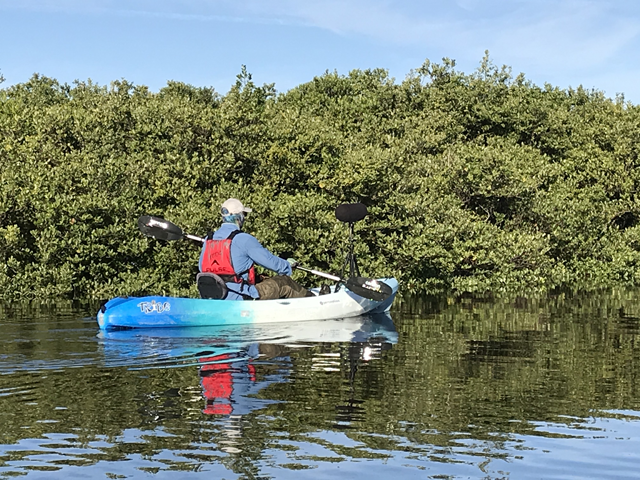By Lisa D. Mickey
The spring of 2020 may forever be remembered as a season of fear and change when the Corona-19 virus roared across the globe in pandemic fashion and impacted many lives along the way.
Businesses and schools closed their doors around the world, which meant that workers and students isolated themselves at home for weeks out of precaution. After only a short time, that shutdown isolation turned into a quest for safe outdoor activities when possible – preferably away from others and as an escape from potentially unhealthy city life.
And in that pursuit to escape four walls and each other, the irony of the 2020 pandemic has been that more citizens have used the last several weeks stuck at home to go outdoors, to turn off the electronics and to truly listen to the natural world around them.
That has been something pioneer bio-acoustician Dr. Bernie Krause has known and advocated for more than 51 years. Krause founded Wild Sanctuary, an internationally acclaimed soundscape field research and sound arts group whose work has been featured in such places as the Smithsonian Institution and the American Museum of Natural History. The group boasts a catalog of more than 4,500 hours of wild soundscapes around the world, including more than 15,000 life forms.
Krause and Wild Sanctuary team member Jack Hines were featured keynote speakers at last fall’s Sh.O.R.E. (Sharing Our Research with Everyone) Symposium in Daytona Beach. The annual community science event kicked off a six-week stay by Hines in the historic Doris Leeper House in Canaveral National Seashore.
It was during his artist-in-residence stay at the Leeper House, located on the banks of the Indian River Lagoon within the national park, that Hines captured the living sounds of the surrounding ecosystem using sensitive bio-acoustical recording equipment.
That work launched the inaugural ACA Soundscape Field Station at Canaveral National Seashore – a partnership between the Atlantic Center for the Arts and Canaveral National Seashore – and became the first initiative in the United States dedicated to preserving existing natural sound within the borders of a U.S. National Park.
For Hines, that meant recording the range of sounds from the roaring shoreline marine habitat at Canaveral National Seashore to the thick palmetto and live oak maritime forest, to the ambling estuarine mangrove forests, salt marshes and Indian River Lagoon, where he also used a hydrophone to capture underwater sounds of the estuary.
“When you go to each one of these diverse habitats and listen, you can hear a difference in them,” said Hines, who produced a final compilation, Soundscape of Canaveral National Seashore.
Krause added that to capture the sounds of any given environment is to consider its inhabitants — past, present and future.
“You should be listening for how robust a habitat is based on the natural soundscape that defines it and through which that habitat is expressed acoustically,” Krause said.
“Put a microphone out there and it’s going to tell you within 15 seconds how healthy that habitat is and whether or not that habitat is a place you want to visit,” he added.
Krause’s long involvement with bio-acoustic monitoring stemmed from a personal health challenge years ago that drove him outdoors to feel better. As he sat in the fresh air in a natural area near his home in Northern California, he began recording the sounds around him.
“Natural soundscapes were my doctor and it became a healing event for me,” he said.
But Krause kept his recording devices rolling throughout more than five decades and noticed the sounds around him were changing. The cacophony of thriving avian life in the trees had begun to thin. Over time and as developmental urban sprawl spilled deep into the California hills, he observed there were fewer songs to record. The habit had changed, and so had the natural symphony.
“After about 10 years of recording, I began to realize there was a really important scientific component to this, as well as an artistic component,” said Krause, who also wrote “The Great Animal Orchestra: Finding the Origins of Music in the World’s Wild Places.”
Hines, who lives in California’s Sonoma Valley, has worked with Krause over the years and has also grown to recognize bio-acoustic monitoring as a viable measurement tool in the environment.
“I think of it as reading vital signs in the same way you would go to the doctor and they would check your heart rate and blood pressure,” said Hines. “Through listening, recording and analyzing the data that we collect, we can really measure habitat health.”
“There’s a lot of different ways we can take those vital signs,” he added. “But ultimately, that’s our life support system for the planet. The more we do that, the better we are taking care of ourselves.”
Through their work, Krause and Hines both have an ears-to-the-ground understanding of how the natural world can nurture the well being of all living creatures when healthy, but their work has documented that when too much noise, too much busyness and too little space is available, the habitat suffers for all.
“There is a visual aspect of this place that is just stunning,” explained Hines of his visit to the New Smyrna Beach area last fall. “I went on a kayak trip and took some pictures, but when I did the presentation at ShORE, the pictures told one story while the audio told another story.”
During that early-morning kayak trip at the Marine Discovery Center, Hines paddled into a pristine, mangrove-encased part of the lagoon that promised solace. What his recording devices captured, instead, was a passing train a mile away, wailing sirens, clanging construction and the sounds of low-flying planes, distant boat engines and at least one rumbling motorcycle – sounds that have become a common backdrop even in an untouched natural surrounding.
“I had to work pretty hard with the equipment I have to find places that have peace and quietude,” Hines said.
“There’s a lot of noise here and it’s the same in most places, but if we can start to pay more attention and intentionally seek out peace and quiet, the better it is for us.”
Hines is optimistic about an ongoing residency program to conduct recordings at selected sites in Canaveral National Seashore and he is pleased that Stetson University has taken a year-round interest in collecting bio-acoustical data in the park.
“What I’d really like to see is for that to continue so we have solid data from these sites moving into the future – for some 20 to 30 years from now,” Hines said.
And as Krause learned over the years while listening to the bird population dwindle in his favorite open space, the natural places we turn to don’t have to mimic the pace or diminished space of the places we call home – the same places that sometimes contribute to illness and diminished quality of life.
“We don’t have to witness forests going quiet and species dying,” said Hines. “We can be intentional about doing something to avoid that so our natural places can still be full of life. The healthier they are, the more our lives are enhanced.”
And the more humans will turn to those places in times of need, fear, or in pursuit of general well-being – especially during times of crisis.
Even if regarded simply as a measurement tool, soundscapes, such as the newest edition from Canaveral National Seashore, capture in real time the healthiness of our surrounding world. Krause says the goal is to maintain and grow the robust sounds of life emanating from the park for years to come.
“When you listen, it’s all there — everything you need to know,” said Krause. “It’s not political. It’s not religious. It’s not social. It’s fact. Listen to the science.”







Follow Us!